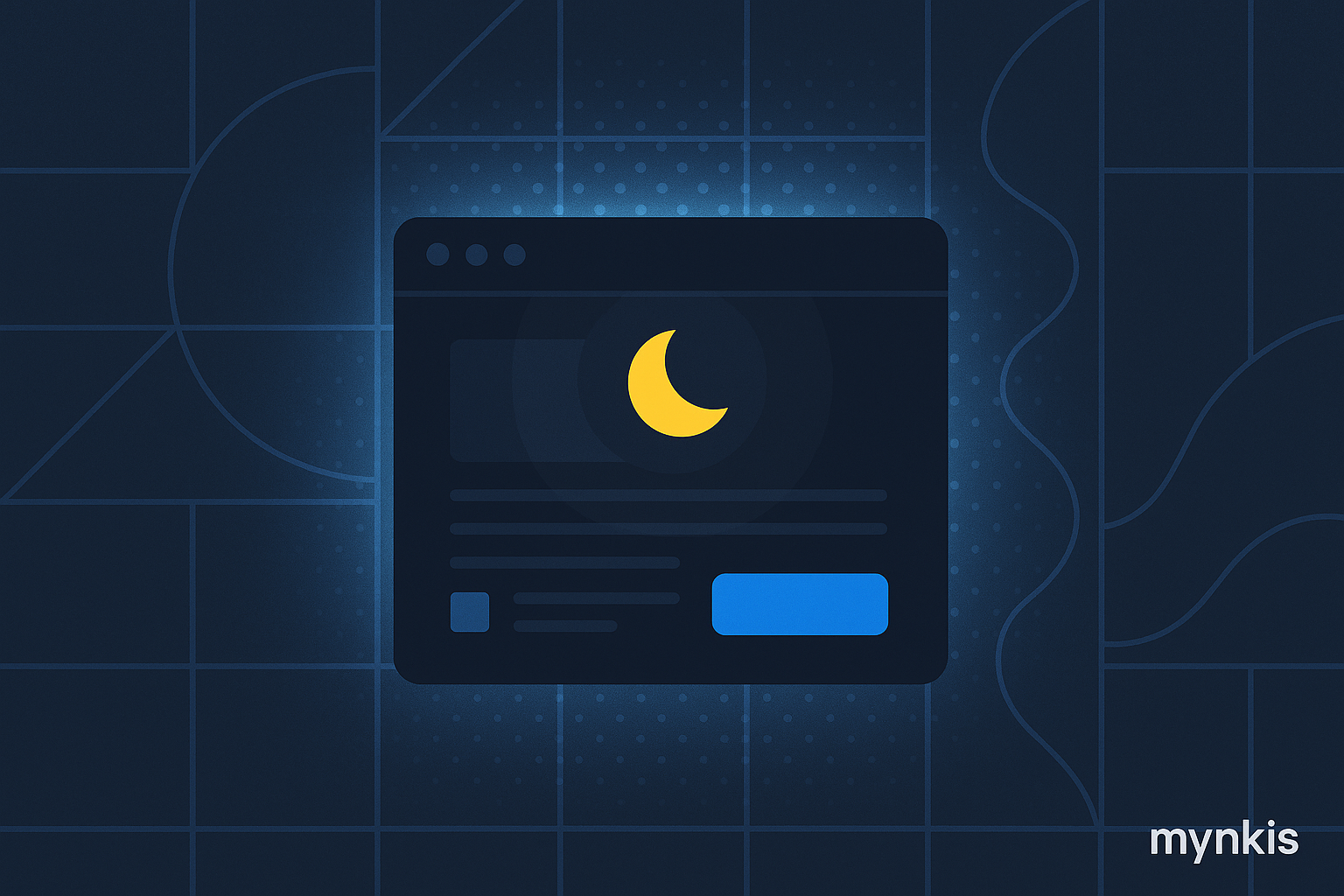Schedule a Demo
Dark mode website design isn't just a stylish trend sweeping the digital world; it's a pivotal shift that offers both aesthetic and functional benefits. In my interactions with business leaders, I've noticed an increasing interest in how dark mode can elevate user experience and brand identity. It's not merely about aesthetics; it's about creating a more comfortable viewing environment for users, which in turn, could potentially boost engagement rates.
One of the most celebrated benefits of dark mode is its ability to reduce eye strain. A user working late into the night on their SEO-optimized B2B website, for instance, would appreciate the darker background easing the pressure on their eyes. This, I've learned from our project leaders, directly correlates with increased session durations. Additionally, dark mode can contribute to battery savings, particularly on OLED screens where black pixels consume less power. Moreover, the elegance of a dark interface can align seamlessly with certain brand identities, adding a sophisticated touch to enterprise-level websites.
However, diving into dark mode isn't without its challenges. I've worked with firms seeking B2B solutions who found readability could sometimes be an issue, especially for older users or those with visual impairments. Contrast management becomes crucial, and in some dark mode designs, certain text or link colors may not stand out sufficiently, potentially affecting the effectiveness of SEO and lead generation strategies.
While dark mode doesn't directly influence search engine rankings, the way it affects user engagement and behavior can indirectly impact SEO. Longer session times and better user retention can signal to search engines that your site offers a valuable user experience. Yet, balancing aesthetics with functionality is key to maintaining strong SEO performance. Our experience with custom software development suggests that websites need to be navigable and accessible in both light and dark modes to maximize lead generation potential.
Accessibility remains a critical concern in dark mode design. In my work with businesses aiming to optimize their B2B websites, I've emphasized the importance of WCAG (Web Content Accessibility Guidelines) compliance. It's essential that color contrasts are sufficient and that the site remains fully usable and readable for everyone, including users with disabilities. The American Foundation for the Blind underscores the need for such considerations, emphasizing how design choices can impact user inclusivity.
Dark mode can be a strategic element of your brand's visual identity. A sophisticated dark palette can make enterprise web solutions feel more exclusive and premium. From my discussions with marketing directors of Fortune 500 companies, leveraging dark mode can be a subtle yet effective way to convey innovation and luxury, aligning with the branding needs of businesses striving for excellence.
Integrating dark mode into a website, especially for those designed for lead generation and automation software, involves careful planning. The backend development requires custom software development to ensure smooth transitions and performance optimizations. During my consultations with tech teams across various industries, the consensus is clear: thorough testing for all devices and varying screen brightness levels is critical to maintaining a top-tier user experience.
Collecting user feedback is essential before fully rolling out dark mode. I've guided several clients through A/B testing strategies to gauge preferences and troubleshoot issues like navigation or readability. Employing heatmaps and user session recordings can reveal insights into how visitors interact with your site in dark mode, informing further refinements.
Dark mode’s versatility allows it to be adapted across different sectors. In financial services, dark interfaces can provide a calming backdrop for analyzing complex data. In gaming, they create immersive experiences. For firms in automation software or B2B web design, dark mode can accentuate the technological prowess of their offerings, making them stand out in a crowded marketplace.
Personalization in website design offers users the choice between light and dark modes, enhancing user satisfaction. In custom software development projects focused on B2B lead generation, we've found that giving users the control over their experience not only boosts usability but also enriches their interaction with the brand, potentially leading to better conversion rates.
Looking ahead, dark mode seems poised to remain relevant, adapting to new technologies and user preferences. In my dialogues with technology forecasters like Gartner, there's a prediction that more sophisticated dynamic dark modes might emerge, with machine learning algorithms adjusting interface contrasts in real-time based on ambient lighting. This evolution could offer significant benefits for firms looking into enterprise web solutions, ensuring their platforms remain cutting-edge.
For businesses considering a shift to dark mode, here are actionable steps to guide the transition:
The adoption of dark mode on B2B websites geared towards lead generation and integrations is a trend that speaks to a broader user experience evolution. While it brings certain challenges like potential readability issues and the need for meticulous implementation, the benefits—increased user comfort, potential battery savings, and a chic branding aspect—could outweigh these cons. Crafting a well-executed dark mode interface requires a blend of creativity, technical know-how, and a deep understanding of user needs. Guided by the insights gathered from working with industry leaders and technology pioneers, I believe that thoughtfully embracing dark mode can elevate a firm's digital presence, aligning with the sophisticated demands of today's enterprise-level solutions.
